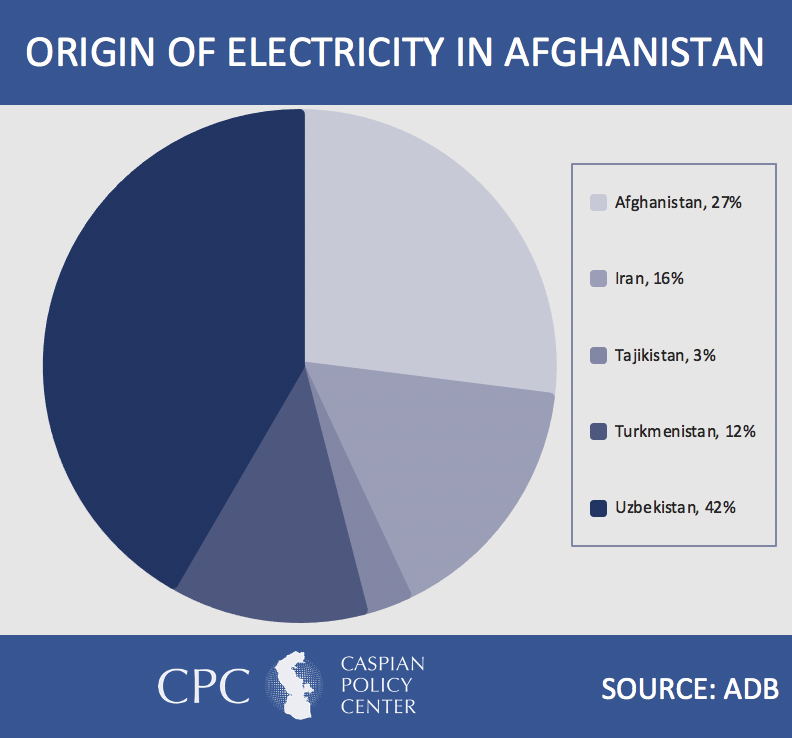The Urgent Need to Expand Afghanistan’s Electricity Supplies
Recent Articles
Author: Dante Schulz
01/28/2021
On January 7, Afghanistan reported that Kabul and at least 12 provinces were experiencing severe power outages. While large-scale power outages are not unknown in Afghanistan, Afghan state-owned utility company Da Afghanistan Breshna Sherkat (DABS) reported that this most recent blackout is due to technical failure in Uzbek power plants that export electricity to Afghanistan. The situation was such that Electric Central News reported January 7 that Kabul had power for only 20 minutes that day. Afghanistan’s domestic power plants have long lacked the capacity to match the country’s growing demand for electricity, so imported electricity is essential. The January blackout, in addition to highlighting the country’ longstanding electricity problems, came at a time when the country is grappling with the spread of COVID-19 and fragile discussions with Taliban militants.
Power outages are common occurrences in Afghanistan. The country requires approximately 1,600 MW of electricity annually, yet only 30 percent originates from domestic sources. About 70 percent of Afghanistan’s electricity is imported from neighboring Iran, Tajikistan, Turkmenistan, and Uzbekistan. Uzbekistan alone provides 460 MW of electricity to Afghanistan annually, of which 300 MW is directed to Kabul. Even developing domestic electric generation capability can include the need to deal with the country’s neighbors. For instance, almost all rivers flowing through Afghanistan are trans-boundary, yet the country has only one water-sharing agreement , which is with Tehran. Such a reality hinders efforts to construct hydro power facilities.

Taliban insurgents are also to blame for frequent power outages. In early 2020, Taliban militants were responsible for crippling transmission towers in Kabul and Charikar city in Parwan province, causing blackouts across Kabul and the eastern part of the country. Attacks on power stations have become more frequent since the United States-Taliban deal was brokered last February, further hampering the country’s efforts to deliver reliable electricity to its citizens.
Several Afghan power companies are moving to increase domestic electricity generation. In November 2019, Bayat Power, a Kabul-based oil and gas company, received permission to build a modular gas-fired power plant in the country’s northern region. The project was Afghanistan’s first gas power plant in four decades. The power plant will supply more than 250 MW to over 700,000 households. In a similar fashion, the Afghan government has begun to recognize the importance of ramping up its extraction industry to tap domestic natural gas deposits to power new power generation plants. A stated reason for doing so is to increase Afghanistan’s energy security by increasing the overall volumes of electricity available by constructing new natural gas power plants and overhead transmission lines while lessening the dependence on imported power.
While long-distance and cross-border projects are susceptible to uncontrollable events in neighboring countries and sabotage by Taliban militant groups — attacks which at times have also hobbled home-grown infrastructure — they have contributed to a successful campaign in bringing electricity to remote regions of the country. In 2010, only 42.7 percent of Afghanistan’s population had access to electricity. By 2018, that amount had jumped to a staggering 98.7 percent.
Afghans’ access to electricity has grown due to imports from its neighbors. However, the January 7 blackout shows the need to address the country’s shortfall in electricity supplies and Afghanistan’s continued growing need for energy on a number of fronts. Afghanistan’s poor infrastructure and shortage of capital have limited its ability to engage in large infrastructure development projects. Afghanistan’s reliance on its neighbors such as Iran, Turkmenistan, and Uzbekistan for electricity, is a consequence of this shortcoming as well as a means for handling a pressing problem. Looking ahead, Afghanistan should keep bolstering relations with neighboring countries to secure reliable energy supplies while also reaching out to international donors to acquire capital for domestic infrastructure redevelopment to boost electrify supplies and its energy security. .